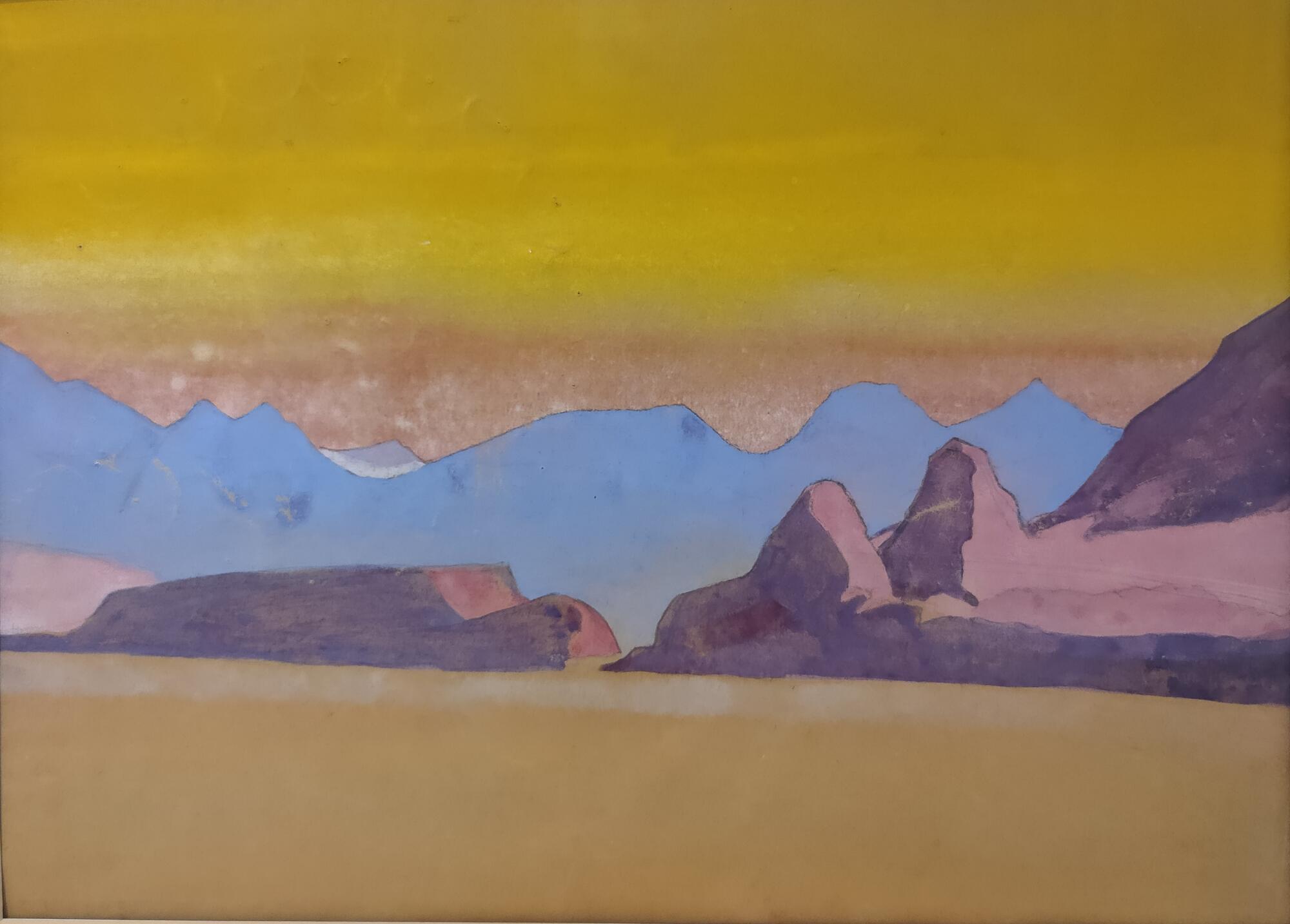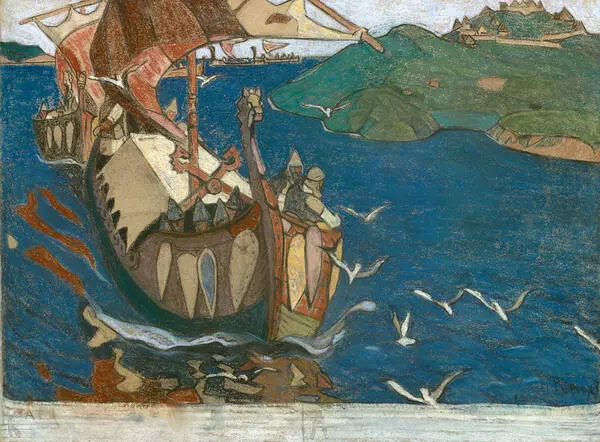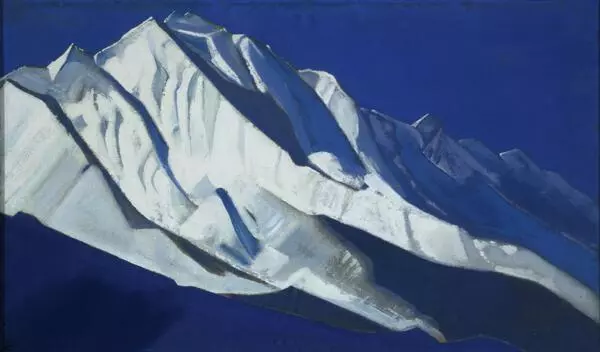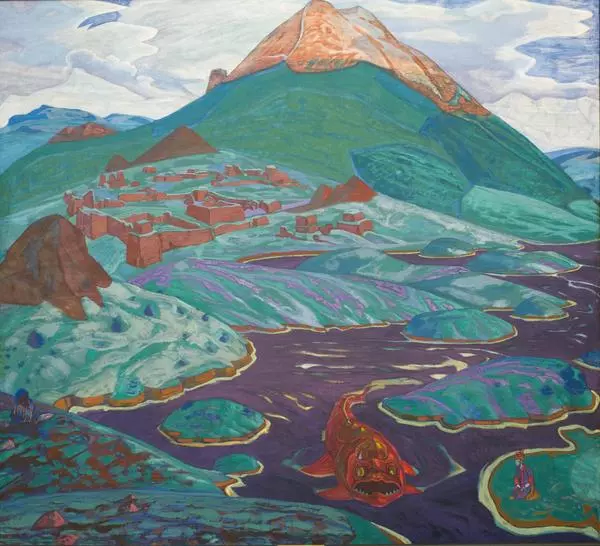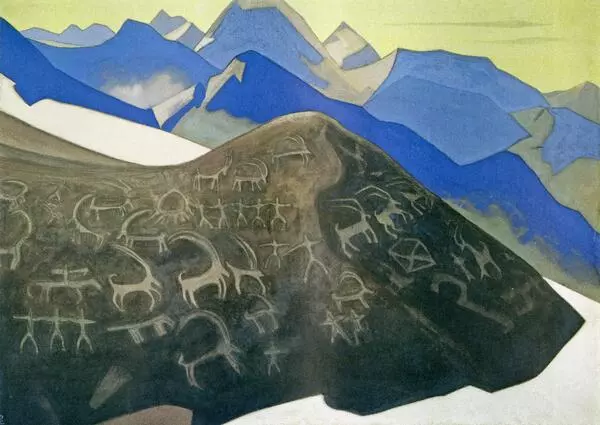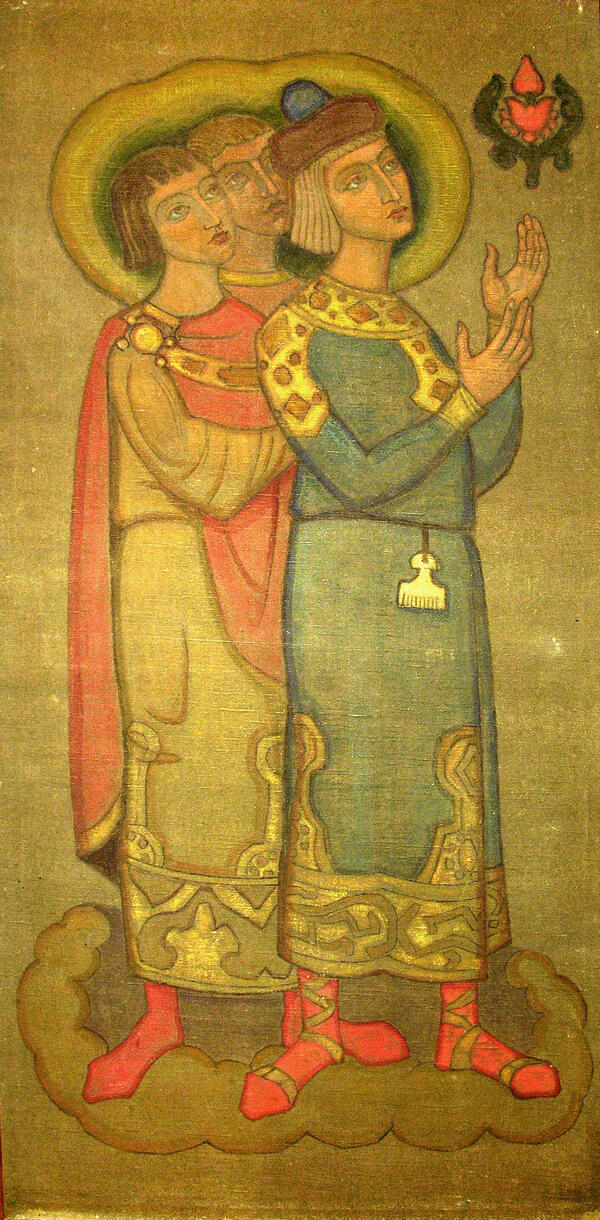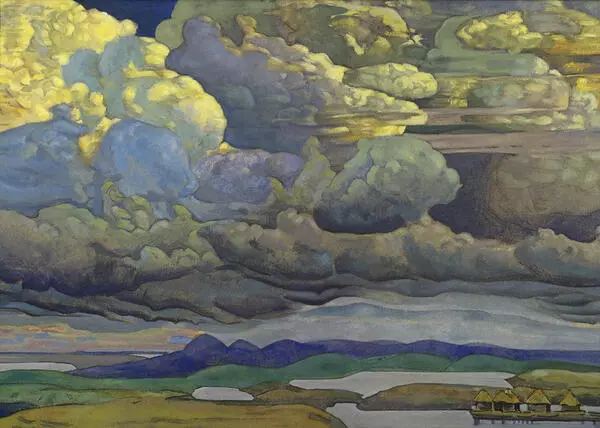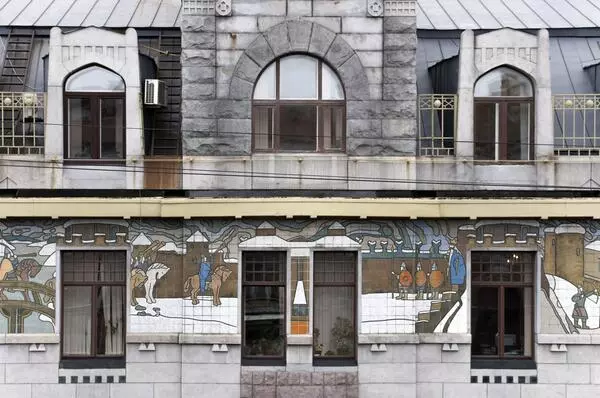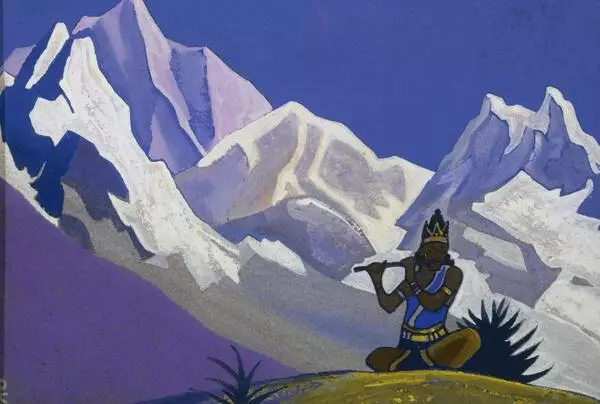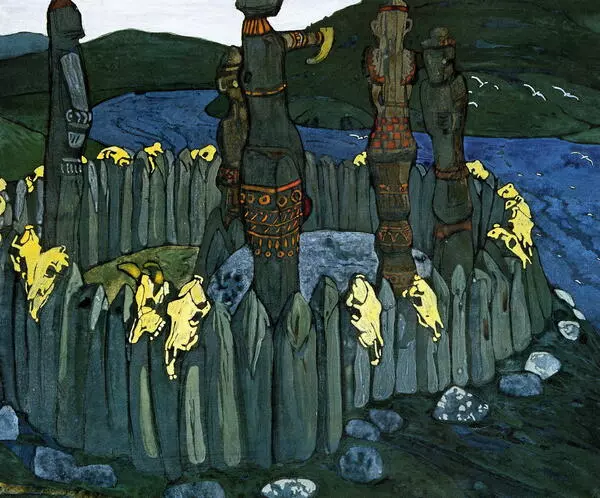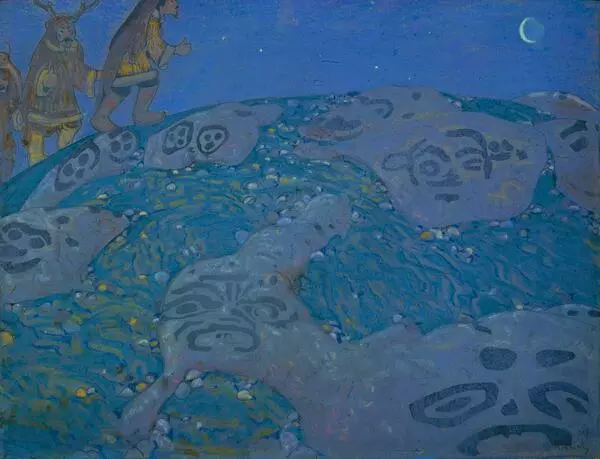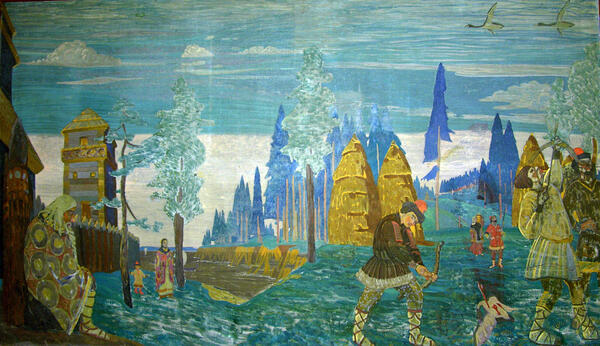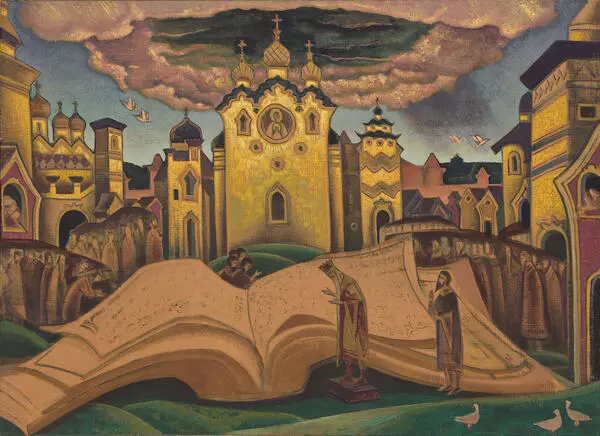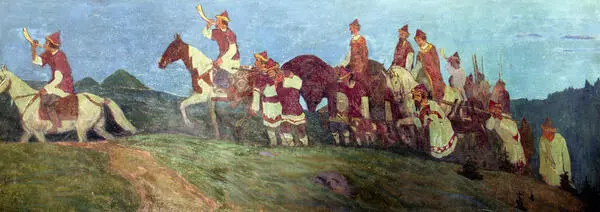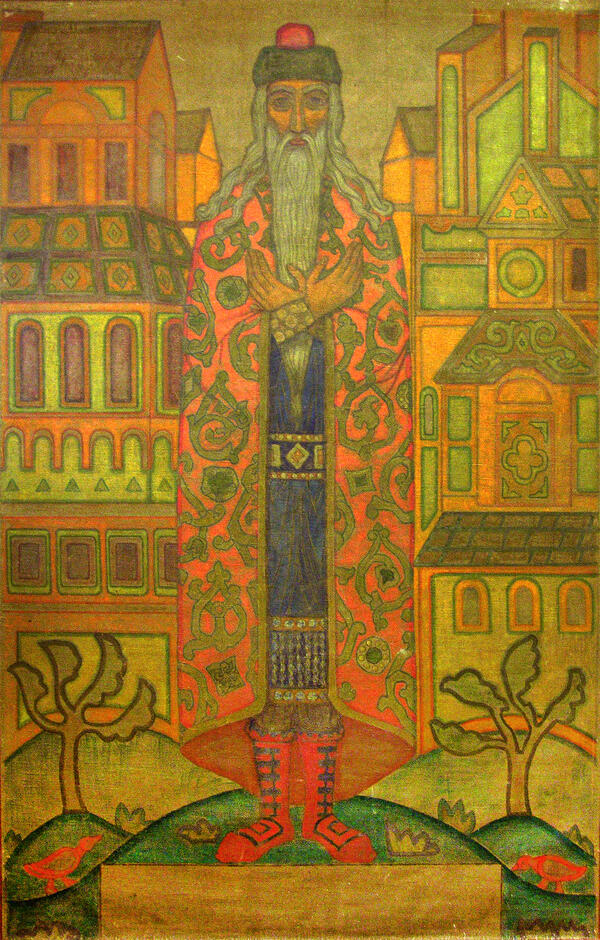Nikolay Rerikh created Landscape in 1926. In the study, he depicted a bright, golden sky that contrasts with the mountains. The artist did not leave any clues about whether he painted a dawn or dusk. It can only be seen that he caught the transitional state of the day, when the sun backlights the landscape especially brightly. The artist loved to depict mountain ranges during sunrise and sunset — this is just the kind of lighting that imparts the distant peaks with a particular dark blue.
Nikolay Rerikh painted mountains with several localized colors. Localized means uniform colors of objects that do not have any reflections. The artist brought out the closer rock faces in lilac shades, and the distant peaks are in vibrant blue.
The artist made this study during an expedition to Central Asia. From 1923 to 1928, the Rerikh family and its companions made their way in a caravan through the middle part of Asia. In 1926, they went past the ancient city of Kuchar (or Kuche), which is located at the foot of the Tien Shan mountain range. Apparently, it was there that the artist captured this view, with its golden sky and blue peaks. He personally gave the study as a gift to the Buryat artist Tsyrenzhap Sampilov. They met a year later in Urga, the historical name of Ulan Bator in Mongolia. On the reverse side of the study there is a script written in Nikolay Rerikh’s hand. He wrote the name of the work: “Near Kuchar”, and after that the memorial script: “To Sampilov as a keepsake, and good luck with your new job. Rerikh 1927.” Due to the fact that the artist made the memorial script one year after he created the work itself, people sometimes get confused about the date the study was made.
It is believed that due to the uniqueness of the route taken, and the materials collected, the Rerikh expedition occupies one of the most important places among the large-scale expeditions undertaken in the 20th century. The Rerikhs were involved in excavations and ethnographic research, and they also found rare manuscripts, and recorded local folklore and customs. During the expedition, the artist created about 500 paintings.
Nikolay Rerikh lived from 1874 to 1947. He is remembered as a mystic philosopher, writer, traveler, archaeologist, and public figure. In 1893, he enrolled simultaneously in the law department at St. Petersburg University and in the Imperial Academy of Arts, and then graduated from both educational institutions. After studying, he was involved in theatrical performances, and cooperated with the famous modernist magazine World of Art. Many researchers classify his paintings as modernist, something in which symbolism and an almost theatrical brilliance occupied an important spot.
Starting in the mid-1900s, the artist became more and more interested in the topic of India and the Orient. Nikolay Rerikh studied Buddhist philosophy, collected objects of Japanese art, wrote several essays on Japan and India, and created paintings that incorporated Indian motifs. Starting at the end of 1935, Rerikh lived in India on a permanent basis.
Indira Gandhi said this about him: “His paintings are striking in their richness and subtle sense of color. Nikolay Rerikh conveyed the mysterious grandeur of the nature of the Himalayas remarkably. And he himself, with his appearance and personality, seemed imbued with the soul of those great mountains to a certain extent.”
The artist made this study during an expedition to Central Asia. From 1923 to 1928, the Rerikh family and its companions made their way in a caravan through the middle part of Asia. In 1926, they went past the ancient city of Kuchar (or Kuche), which is located at the foot of the Tien Shan mountain range. Apparently, it was there that the artist captured this view, with its golden sky and blue peaks. He personally gave the study as a gift to the Buryat artist Tsyrenzhap Sampilov. They met a year later in Urga, the historical name of Ulan Bator in Mongolia. On the reverse side of the study there is a script written in Nikolay Rerikh’s hand. He wrote the name of the work: “Near Kuchar”, and after that the memorial script: “To Sampilov as a keepsake, and good luck with your new job. Rerikh 1927.” Due to the fact that the artist made the memorial script one year after he created the work itself, people sometimes get confused about the date the study was made.
It is believed that due to the uniqueness of the route taken, and the materials collected, the Rerikh expedition occupies one of the most important places among the large-scale expeditions undertaken in the 20th century. The Rerikhs were involved in excavations and ethnographic research, and they also found rare manuscripts, and recorded local folklore and customs. During the expedition, the artist created about 500 paintings.
Nikolay Rerikh lived from 1874 to 1947. He is remembered as a mystic philosopher, writer, traveler, archaeologist, and public figure. In 1893, he enrolled simultaneously in the law department at St. Petersburg University and in the Imperial Academy of Arts, and then graduated from both educational institutions. After studying, he was involved in theatrical performances, and cooperated with the famous modernist magazine World of Art. Many researchers classify his paintings as modernist, something in which symbolism and an almost theatrical brilliance occupied an important spot.
Starting in the mid-1900s, the artist became more and more interested in the topic of India and the Orient. Nikolay Rerikh studied Buddhist philosophy, collected objects of Japanese art, wrote several essays on Japan and India, and created paintings that incorporated Indian motifs. Starting at the end of 1935, Rerikh lived in India on a permanent basis.
Indira Gandhi said this about him: “His paintings are striking in their richness and subtle sense of color. Nikolay Rerikh conveyed the mysterious grandeur of the nature of the Himalayas remarkably. And he himself, with his appearance and personality, seemed imbued with the soul of those great mountains to a certain extent.”
